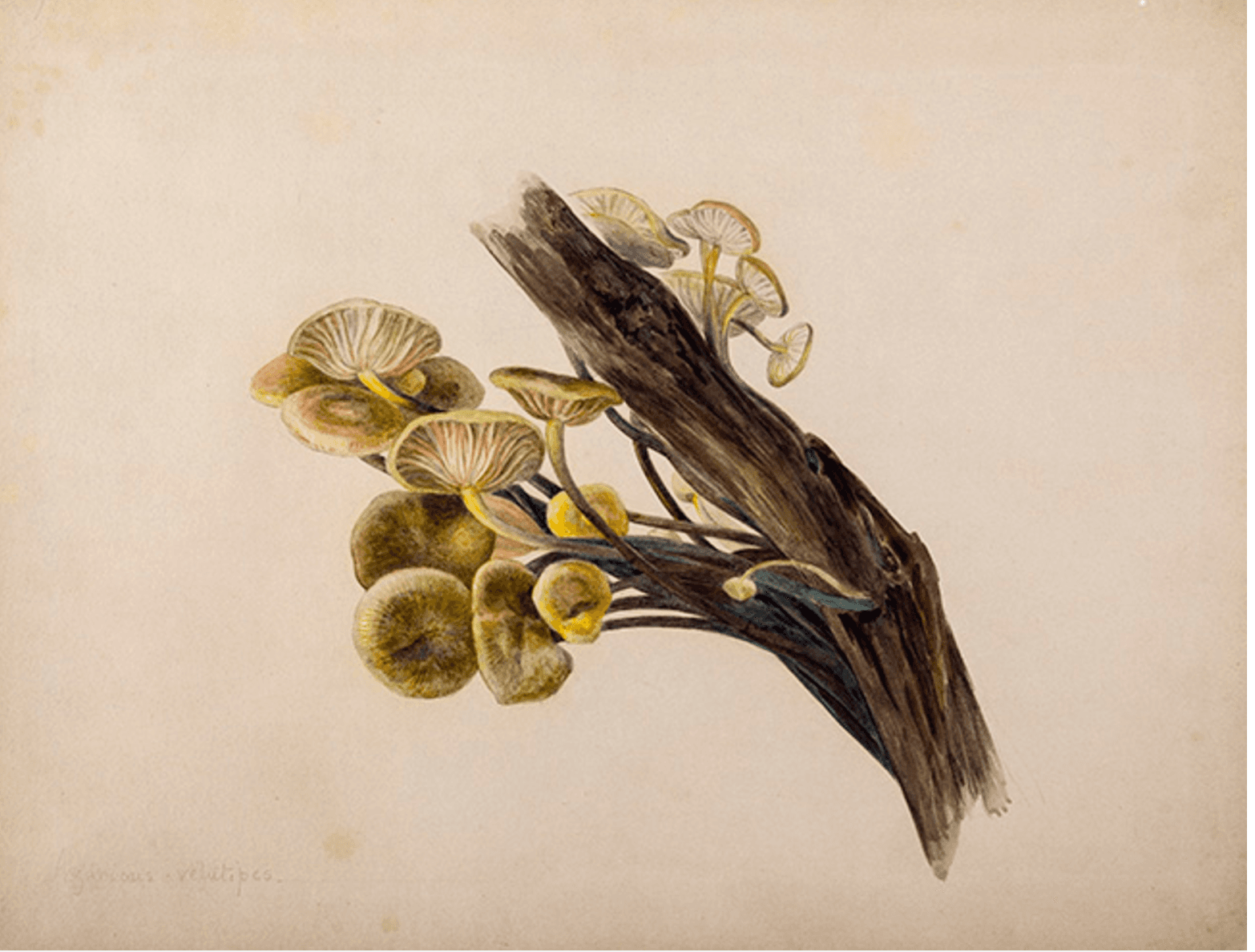Beatrix Potter also made beautiful, scientifically accurate illustrations of mushrooms
Beatrix Potter, best known for her tales about Peter the Rabbit, also did detailed drawings of mushrooms.
Think of Beatrix Potter, and what comes to mind? Flopsy, Mopsy, Cotton-tail and Peter Rabbit. Now, what about Crimson Waxcap?
That's the name of a mushroom. It might seem out of place, but fungi and other wonders of the natural world apparently held as much of a place in Potter's heart as the children's stories for which she's known today.
The notion initially surprised Linda Lear, one of the authors of the new book, "The Art of Beatrix Potter."
“I was in the Science Museum in London and came across these incredible fungi drawings [with] no labels on them,” she said. “I found out they were by Beatrix Potter. I had no idea.”
Lear learned that these drawings, most of them from the 1890s, are so accurate that even today, they are still consulted by scientists.
Potter was passionate about the sciences herself. She learned how to study fungi with a famous Scottish naturalist and later authored a scientific paper about how spores germinate. That paper was read at the Linnean Society of London — but not by Potter herself.
“No women were allowed in,” Lear said, and Potter's paper was almost blocked from being presented at all.
“Beatrix Potter could have been any sort of natural scientist she wanted to be,” Lear said. “She was that good of a scholar.”
But Victorian women weren't offered professional positions in the sciences. The best Potter could have hoped for, said Lear, was a low-level assistant role at a museum — and Potter wanted financial independence.
That's what led her to create the stories she's best known for. She sold drawings to a printer and started illustrating small books for children.
Potter began by penning colorful letters to children, with stories and illustrations.
A friend suggested that Potter should publish a story from her letters. Potter had written to cheer up the friend’s son, who was sick in bed. So, expanding on that, Lear said, Potter “drew up a little book," which told the tale of Peter Rabbit.
After a number of rejections, the book was published in 1902 and became an immediate bestseller. Potter went on to publish 22 more stories in the series, all featuring animal characters.
Potter’s interest in animals dates to her childhood. Born into a wealthy family and educated at home, Potter and her younger brother drew the rabbits, snakes and hedgehogs they smuggled into their schoolroom.
Lear explained how Potter learned to draw animals so realistically, a skill she would employ in the Peter Rabbit books: “When the [pets] died,” she said, the studious siblings "would boil the skeletons and reassociate the bones so that they could be anatomically correct.
“If you look at her rabbits,” Lear said, “you'll see that she knows every muscle.”
Her attention to nature in detail is visible throughout "The Art of Beatrix Potter," where her scientific illustrations appear alongside watercolor landscapes.
Potter's interest in the natural world was scientific and artistic, but it also provided a way for her to cope with isolation. Schooled at home, she was not allowed any friends, and her family was socially ostracized for their Unitarian faith.
“Drawing the world around her,” Lear said, “was what she could do to keep from being so bored.”
Her dilemma was widely shared — across half the population.
“The great nemesis of Victorian women,” said Lear, “was the problem of boredom.”
Potter, like so many other women held back by society, “had to devise things to keep herself occupied.”
This article is based on an interview that aired on PRI's Science Friday.
We want to hear your feedback so we can keep improving our website, theworld.org. Please fill out this quick survey and let us know your thoughts (your answers will be anonymous). Thanks for your time!
